Leading Your Business Into 2025: Navigating the Economy, Public Policy and Worker Mental Health

Leading Your Business Into 2025: Navigating the Economy, Public Policy and Worker Mental Health
September 4, 2024
Wednesday 9:00 a.m.-1:45 p.m. CT
Englewood, CO
Are you ready to lead your organization into 2025? Amid ongoing change, equip yourself with the insights and strategies to lead your business, advise your clients and customers, and take care of your employees in 2025. This half-day educational symposium, open to business, nonprofit and public sector professionals, explore economic and public policy trends, as well as insights into employee mental health, wellness and workers compensation.
Session 1: Leading your organization into 2025: Making sense of the U.S. economy and the 2024 elections
What do higher interest rates, complex labor force dynamics and evolving geopolitical risks mean for your business and your customers? What pressing challenges will Congress and the White House face in 2025? Drawing on her extensive experience as an economist on Capitol Hill and an analyst on Wall Street, Joan Woodward shared her economic, public policy and political outlook in this data-driven, analytical and nonpartisan presentation. Woodward, who currently serves as Executive Vice President for Public Policy at Travelers, also explored how the 2024 U.S. elections may impact insurance, tax policy and the broader economy.
Session 2: Creating your action plan: Prioritizing worker mental health
What’s your approach to addressing your workers’ mental health? From stress and burnout to substance abuse disorders, this session addressed the state of worker mental health and provided a framework for understanding mental health as a continuum. Speakers shared their perspectives on how organizations can proactively work to understand what resources are needed within their organizations to address mental health and how best to connect employees to those resources. They also discussed the latest trends in workers compensation programs and how they fit into the larger picture of employee well-being. Be part of the conversation as we lay the groundwork, get practical and work together to raise awareness and create a plan to address mental health.
Watch session recording
[MUSIC PLAYING]
(DESCRIPTION)
Text: Travelers Institute (registered trademark). Travelers. Creating Your Action Plan: Prioritizing Worker Mental Health. A slide reads, Navigating the Economy, Public Policy and Worker Mental Health, Denver, CO. Travelers Institute (registered trademark). Travelers. 15 Years. Photos on the slide show a graph, the U.S. Capitol building, and a man in glasses pinching the bridge of his nose. The next slide reads, Proudly Presented With, and displays the logos for Professional Insurance Agents, The National African American Insurance Association, TrustedChoice dot-com, RIMS Rocky Mountain Chapter, Professional Independent Insurance Agents of Colorado, Accion Opportunity Fund, the BIPOC Economic Success Trust, The Institutes CPCU Society Colorado Chapter, The National African American Insurance Association Colorado, and the University of Colorado, Denver, Business School Risk Management and Insurance Program. Joan Woodward wears pearls, standing at a podium in front of a repeating Travelers Institute backdrop. Text: Leading Your Business Into 2025 Symposium. Joan Woodward, Executive Vice President, Public Policy; President, Travelers Institute, Travelers.
(SPEECH)
JOAN WOODWARD: So to kick off our session today, we have opening remarks from the National African American Insurance Association, an organization dedicated to empowering African American insurance professionals, celebrating their accomplishments and attracting talent to the industry. And I really love that third point, that third bullet, because it's really important that we diversify our industry. I'm sure everyone in this room would agree with that.
Travelers is thrilled to have a very long-standing partnership with NAAIA to work with them on Cyber Education Series, which we do around the country. So we're so pleased to have Peter Carter with us to open our program. PC is the President of NAAIA's Colorado Chapter. PC, the floor is yours. Please, come on up.
(DESCRIPTION)
PC takes the stage, wearing glasses and a dark suit. Text: Peter "PC" Carter, President, Colorado Chapter, National African American Insurance Association.
(SPEECH)
PETER "PC" CARTER: Good afternoon, everyone. Good afternoon, everyone.
AUDIENCE: Good afternoon.
PETER "PC" CARTER: I want the energy in the room. Like, Joan came up here, and she was sparkling and exciting. I want to keep that energy going. So, as Joan mentioned, I'm Peter Carter. I go by PC.
I am the Chapter President for the Colorado Chapter of NAAIA. We started here in Colorado in 2021 with the help of some people, actually, folks who are here in this room. So I appreciate the invitation to come here and help to support the Travelers Institute and the session that we have today.
Founded in 1997, NAAIA, as you mentioned, is committed to attracting talented individuals to the insurance industry, enhancing career opportunities for our members, as well as empowering African American insurance professionals industrywide. Through education, networking and affiliation with associations like this, we are dedicated to increasing community awareness and the myriad of career opportunities of the insurance industry. And so, we are delighted to be a co-sponsor of this event.
As September is National Suicide Prevention Awareness Month, the Travelers Institute is honored to contribute to the national conversation by addressing a critical issue, mental well-being within the workplace. The past few years many of you have seen it has been very challenging, and we've all felt the impact. Volatility from social, geopolitical and economic factors continues to be at the forefront.
A recent Travelers survey of small and small, mid-sized business managers found that nearly 90% are concerned about their employees’ well-being. However, only one-third are truly confident when addressing their employees' mental health in a conversation, so something we really need to address. So in this session, our speakers will assess where we stand as a society and shine a light on how the workplace factors into the dialogue on mental health.
I'm thrilled to introduce our keynote speakers. First up is Dr. Marcos Iglesias. Dr. Iglesias is a physician, executive and national speaker with over 35 years of experience in workers compensation and disability treatment, evaluation and insurance leadership. He has a passion for helping workers live active, productive and fulfilling lives. Dr. Iglesias currently leads the Workers' Compensation Medical Innovation and Strategy Team at Travelers. He will set the stage with a framework for thinking about the issue of mental health.
(DESCRIPTION)
Text: TRAVELERS. Marcos Iglesias. MD, Vice President, Chief Medical Director, Travelers. Topic: The State of Mental Health. Marcos takes the podium, wearing glasses and a dark blazer.
(SPEECH)
MARCOS IGLESIAS: Well, it's really a privilege to be here with all of you. Thanks for coming out to this very important day in the life of the Travelers Institute, and I want to extend a special thank-you to Joan and the whole Travelers Institute for having us here to talk about this really sobering, but extremely important topic. What I'd like to do today is, in the next few minutes, just to set the stage to talk a little bit about mental health in this country and our society. So that, as we go into the session, into the panel session and talk about workplace mental well-being, we'll have a little bit of a grounding, a little bit of a better idea as to what it is we want to accomplish.
Let's go ahead and get started and set the stage.
(DESCRIPTION)
Text: How prevalent is mental illness? 23% of U.S. adults experienced mental illness in 2021. In a graphic, one human figure in five is colored red. Text: 1 in 20 U.S. adults experience serious mental illness. In another graphic, one figure in 20 is colored red. Source: National Alliance on Mental Illness. Nami dot-org slash M H stats. Accessed 26 March 2024.
(SPEECH)
I will cut to the punchline, which is this. We're in a mental health crisis in this country today. There's no question about it, and what I'd like to do is to fill in some of those blanks, first of all, by looking at some of the data that the National Alliance for Mental Illness has put out.
In 2021, 23% of all U.S. adults, so that's all of us here and many, many more, experienced mental illness. That's not the end of it. About 5%, one in 20 U.S. adults, that same year experienced what we would consider a serious mental illness. And what do I mean by a serious mental illness? This is a condition that causes serious functional impairment in, at least, one area of our lives.
So think about it in a major life area, like our family, like our workplace. So 5% of us in 2021 were experiencing this serious mental condition. Additionally, if you look at some other data, anywhere between 19% and 25% of us here in this room currently meet the criteria for diagnosable anxiety disorder. That's a quarter of us.
In 2022, there were over 107,000 drug overdose deaths. The year before that, there were over 100,000. We don't have data for 2023 yet, but that number is surely not coming down.
We have a crisis when it comes to suicide rates going up every year for the last 20 or 30 years. We have drug use disorders. We have stress. Cannabis use is now a common condition when we look at cannabis use disorder, and I don't know if you ever caught, in the last few weeks, the news item that said that there are now more daily cannabis users than there are alcohol users in this country. And we know that daily users of cannabis have a 30% rate of cannabis use disorder or what we used to call addiction.
These things are all serious, and they're prevalent.
(DESCRIPTION)
Text: Discussing the Facts. 30% of adults sleep less than 6 hours per day. Stress. Burnout. Loneliness epidemic. Sources: CDC. SleepFoundation dot-org, Gallup.
(SPEECH)
If you add to that, we have issues with sleep, and we're going to talk a little bit more about sleep in a little while. But 30% of us-- and I would venture to say that it could even be more in this room-- 30% of us get fewer than six hours of sleep every night. By the way, seven hours or more is what's recommended for an adult who is healthy.
This affects our function. It affects our mood. It affects our work productivity. It affects-- as we'll probably talk about a little bit in the panel, it affects our risk of injury and our risk of adverse health conditions, like heart disease, obesity and even all-cause mortality.
Stress is rampant. This didn't start during COVID. All of us face stress probably on a daily basis or on a weekly basis. There's burnout in many professions, including my own. This is contributing to what-- you are very aware we have a medical provider shortage in this country, and that is only going to get worse.
Of course, that also impacts the availability of mental health treatment, so this is a vicious cycle. The surgeon general has labeled loneliness an epidemic. So what are we to think about all of this? These are sobering statistics. We are in a crisis.
Is there any hope? How do we respond? I think that the COVID-19 pandemic brought a lot of these things to the forefront. We started talking a little bit more about mental health, about sleep, about stress, about burnout, and that's good. But what we see today is truly disheartening.
And let me be very clear, too. COVID did not cause these issues. Mental health has been on a decline in this country for many years. Some would argue that, at least, the last 15, 20 years, but there are signs that, even in the latter half of the 20th century, we were seeing increased diagnoses of mental health conditions. We were seeing more stress, and that is certainly evident today.
So, for example, since 2000, the suicide rate in this country has increased by over 36%, and in almost every one of those years, the suicide rate has gone up. Psychiatric diagnoses have increased in prevalence for many, many years now. Mental health has been taboo in many societies, not just ours, and it's been taboo in the workplace. And I think we need to change that. I do think that it is changing, and one of the ways that we can accelerate that change is by including mental health in our conversation about health in general.
(DESCRIPTION)
What is health? Health is a state of complete physical, mental and social wellbeing and not merely the absence of disease or infirmity. World Health Organization. In a photo on the slide, a woman lays on a yoga mat, smiling at a little girl whom she balances on her raised legs. The Travelers and an interlocking S logo appear in the bottom right of the slide.
(SPEECH)
What I'd like to do in the next couple of minutes is really to bring mind and body back together. As a society, I think we've separated mental health from physical health for too long. We talk about physical health, things like diabetes, high blood pressure, and we're comfortable with that. But if you start to talk about anxiety, disordered sleep, personality disorders, I don't want to go there.
We need to get to the point where we're talking about mental health in the same breath as we're talking about our physical health, and that's one of the reasons that I like what the World Health Organization talks about when they describe health. Health is a state of complete physical, emotional, mental, social well-being, not just the absence of disease or infirmity. What we're getting at with this definition is what many of us have called now for probably about 30 years, the biopsychosocial approach to understanding our health, and this is really just a way of looking at each one of us, whether we're healthy, ill or injured, through three different lenses.
(DESCRIPTION)
Text: A biopsychosocial approach. In a Venn diagram, three circles overlap each other uniformly, creating a triangular space in the center where all three circles overlap. The circles are labeled, Biological, Psychological, and Social.
(SPEECH)
Again, we've been very comfortable talking about the biological, the medical. That's what we were trained on as physicians, as physical therapists, as nurses. That's what society is comfortable talking about, what we are OK to talk about in the workplace.
Did you get that blood pressure screening? Hey, the nurse is going to be doing a diabetes screening. Have you signed up? Have you heard that about depression screening or anxiety screening? Probably not.
So the biological is certainly important, and I'm not here to minimize it. But I'm here to say that the social and the psychological is just as important. We are not, after all, just bodies. On the other hand, we're not disembodied spirits either. We're one, and it's important to look at the social and at the psychological when we're talking about health.
So what do I mean by social? I mean, the individual and the context of his or her family, community, workplace, nation, what's going on in the economy, what's going on in the world geopolitically. All of these things matter, and they matter to our health.
What do I mean by psychological? And this one, I think, needs a lot of unpacking, and we're going to do that over the next few minutes. It's not just psychiatric.
So what do I mean by psychiatric? I mean things like personality disorders. I also mean schizophrenia. I think about a major depressive disorder. Those are psychiatric diagnoses, and they're important. But if you go back a few slides, remember, that's about 5% of us.
There's a lot of other things that go on in our psyche, and our mind, and our spirit that are just as important, and we're going to talk about those. So in a way, I'd like to talk about the psychological as the way somebody thinks, feels and behaves as a result of that, and those things matter. They matter to our physical health, to our immune system. They matter to our cardiovascular system, to our GI system. They matter also to things, like all-cause mortality.
Think about how stress-- think about how workplace issues affect our body, but the reverse is true. Our body affects how we function in society, how we function emotionally, and these things matter in the workplace. Absenteeism, presenteeism, work productivity, interpersonal conflicts, these are all part of what's going on not only in our psyche but are influenced by our body and by the way that we live in our society.
(DESCRIPTION)
Text: Mental health continuum. A horizontal spectrum on the slide has an arrow at each end. It begins in green on the left, labeled, Excelling, then yellow-green further along the spectrum, labeled, Thriving. Yellow around the middle of the spectrum is labeled, Surviving. The yellow fades into orange, Struggling, which fades into red, Crisis. Words arranged in a downward step pattern say, Traits, Stress, Symptoms, and Diagnosis. Text: Source: Delphis dot-org. Accessed 17 April 2023.
(SPEECH)
So I'm going to stop here with something that, I think, is very important. And if you don't remember anything else, I'd like you to remember this. With a growing acceptance of mental health as being important, I think we need to define our terms a little bit better, and I think we need to really understand what we mean by mental well-being, by mental illness, by mental health. And what I like to do is to think about it as a continuum.
Mental health is not a monolith. It's not one thing, and it's not one thing even for you at any one given time. It's not one thing for me. So at any point, I might be excelling, striving.
Today, I might just be surviving. Tomorrow, I might be struggling, and on some days, some of us are in a crisis. We feel like killing ourselves. We feel like giving up. Those are crisis situations, and they need to be addressed.
So as you can see, mental health for any one of us, any moment in time is anywhere on a continuum. With 200 of us here, there's going to be many of you in the middle, many of you on the left-hand side, and there are going to be some of you who are on the right-hand side of this equation or this continuum. We want to know how to help individuals like this, individuals like me, like you.
But when we talk about a mental health continuum, I think it's really important, too, to realize that mental health can be anywhere from a psychiatric illness or a diagnosis, like I've put on the right-hand side, and it doesn't have to be a diagnosis that has been made by a licensed mental health professional. It could be a diagnosable condition. It could be that I haven't been yet diagnosed with this particular illness, and that's certainly important. But if you remember, that's maybe 5% of us at any one time.
I think what we need to realize, that many of us, many more of us in this room are experiencing mental health symptoms or psychological symptoms. What do I mean by that? I may mean you may feel blue, down, depressed right now. That's a symptom. That's not necessarily a disorder or a mental health condition.
If it's severe enough, if it's interfering with your life, with your functioning, if it goes on for long enough, maybe it's diagnosable, and maybe it will be diagnosed, and assessed, and treated. But all of us have symptoms at one point or another. This is especially true when we're dealing with injured workers. Very few of them have a mental health diagnosis. Many of them have a symptom, and the two most common symptoms are depression and anxiety.
A work-related injury can be, especially if it's a long-standing one, can be very depressing, can be anxious, as well, as you start wondering how you're going to provide for your family, as you start wondering if you'll ever get over this illness or this injury. So symptoms are important to recognize, but then there's also the everyday stress. And I put stress in a separate category altogether. It's part of the human condition.
If you have never been stressed, you've not been alive. If you are going to be alive in the next year, I promise you, you will be stressed. Sometimes more, sometimes less, but it's part of the human condition. Yet, we can learn how to manage it. We can learn how to live with it. We can learn even to make it work to our advantage. And I would argue that stress is a good thing in some cases and if handled the right way.
But lastly, there are what I call traits, and by this I mean, really, the way that we develop to deal with the circumstances around us. Some of us are very good at scheduling our days, at setting goals. Some of us know how to deal with anger, how to deal with stress, and those are good things. A lot of us aren't. And especially in the context of a work-related injury, when we're not good at some of these things, if we have not developed good coping skills, if, on the other hand, we've developed maladaptive coping behaviors, if we're what we call catastrophizers, we make a mountain out of a molehill, if we blame others for our circumstances, we blame circumstances for our current circumstance, it's more likely than not that we're going to experience this stress, that we're not going to recover after an injury or an illness, like we should, and that's a trait.
So when we look at all of you, when we look at injured workers, it's important to understand what we're dealing with, and this isn't just an academic exercise. This is really important, because as we talk more and more about mental health, we need to realize that we don't need just one mental health solution. We need a number of solutions to meet people where they're at anywhere on this continuum.
So, for example, if somebody is depressed, they've been depressed for three months. They're not functioning in their home. They're barely making it at work. That person doesn't need an app. That person needs a licensed mental health professional to evaluate them, to diagnose them, to put them on a treatment regimen that's going to help them.
On the other hand, if you're dealing with stress, especially in this day, where it's hard to find a psychiatrist, you don't need a psychiatrist. You might need a nap. You might need a book.
You might need to build some skills to help you deal with stress, and that's what you need, and that's what's going to be most helpful. So as we talk about mental health, always ask yourself, where in the continuum are we talking, what types of solutions are available? And let's work on matching the right solution to the right problem for the patient, or for the co-worker or for the employee we have in front of us.
(DESCRIPTION)
A resource slide has four tiles with links. Text: Resources. The first tile has the Travelers umbrella logo and reads: In 2022, Travelers Introduced Mental Health App for Injured Employees. Click here to learn more. The second tile has a logo that reads, Wysa, and reads, Traveler's Wysa App Methodology. Click here to learn more. The next tile has a photo of a man at a laptop pinching the bridge of his nose. It reads, Workplace Mental Health and Well-Being Website. U.S. Department of Health and Human Services. The last tile has the U.S. Department of Health and Human Services logo, which depicts faces in silhouette transforming into an eagle. It reads, Five Essentials for Workplace Mental Health and Well-Being. U.S. Department of Health and Human Services. The next slide reads, Panelist Discussion, with headshots, names, and titles of five speakers. Text: Marcos Iglesias, MD, Vice President, Chief Medical Director, Travelers. Kathryn Mueller, MD, MPH, Professor of Physical Medicine and Rehabilitation, School of Medicine, University of Colorado; Former Medical Director, Colorado Division of Workers Compensation. Rich Ives, Senior Vice President, Business Insurance Claim, Travelers. Les Kertay, PhD, ABPP, Clinical Psychologist; Chief Medical Officer, Ascellus; Adjunct Professor of Psychology, University of Tennessee at Chattanooga. Joan Woodward, Executive Vice President, Public Policy; President, Travelers Institute, Travelers. Travelers Institute (registered trademark). Travelers. Joan appears at the podium.
(SPEECH)
JOAN WOODWARD: Please, join our panel as I call you up. Dr. Marcos, do you want to come up? We've already introduced you, and Dr. Kertay is a clinical psychologist with over 50 years of clinical experience and over 20 in disability and workers comp arena. He's enthusiastic about delivering meaningful behavioral health solutions in a work setting and a strong proponent of worker-centric clinical care.
He's published and has served on committees relating to developing medical guidelines. Currently, he's Chief Medical Officer for Ascellus, and you'll tell us what that is in a minute, and Adjunct Professor of Psychology at the University of Tennessee at Chattanooga. So thank you for traveling all the way across the country for us today.
And next up is my colleague at Travelers and friend, Senior Vice President, Business Insurance Claim, is Rich Ives. He leads our Business Insurance Claim division, overseeing workers comp, general liability, auto, property, specialty claims and international. He has a very, very big plate of work. He's driven key corporate strategies in the United States and Canada, providing thought leadership on issues, like opioid addiction and workforce changes.
He also serves on the board of the Workers' Compensation Research Institute. We're really incredibly lucky to have Rich's leadership at Travelers, and especially grateful for his time today, given his extensive expertise in this challenging topic. So what a group. Thank you all for being here.
(DESCRIPTION)
With Joan still speaking at the podium, the other four speakers sit at a panel table on stage. Rich sits on the left side, wearing a dark blazer and white shirt. Marcos sits next to him, followed by Les, in a dark blazer and blueish tie, then Kathryn, in a blue top. An empty chair for Joan sits at the right side of the table.
(SPEECH)
Like we mentioned during our opening remarks, before we arrived in Denver, Travelers did a survey of small and mid-sized business managers about their confidence level in managing worker mental health and what resources are available to ensure their employees' mental, as well as physical, wellness. So here's what we found. Over 80% reported that they are open to the resources available to handle workers’ mental health, but only 37% reported that they currently use the resources available to address and manage their workers’ mental health.
Nearly three-quarters reported that they have experienced stress in the workplace themselves, and just under a third believe their employees have more than enough mental health resources in place to feel safe and supported, so that 70% feel they don't have enough resources and support. So here's some of the-- I'm sorry, some of the statistics here.
I just want to make sure, if anybody wanted to take a picture of those, that we have them up. So, Rich, I'm going to start off with you. We just heard the state of worker mental health here in Colorado, and I'm going to give you a minute to go through the survey results that we found and what you're seeing out there nationally, what are the most important trends that you're seeing taking place in workers compensation area as well.
RICH IVES: Sure. Thank you for the invitation to be here. It's an important topic, and we are very passionate about this one. We've been doing a lot of work on this area.
So if we take a step back from our local survey here for a second, and we look at a source that might be a little bit broader, the American Psychiatric Association did a survey on work-- the state of the workforce, if you will, or workplace some time ago. And what they found in that survey, a couple of things that, I think, really validate this, 92% of employees said that working for an organization that values their emotional and their psychological well-being was important to them. So I think that certainly validates the reason why we're here, talking about this topic today.
Additionally, the current stats are that 77% of employees in the workforce exhibit some stress, and that's that latest statistic just more recently based. So I think what that does is it nicely links to some of what we found here in our local results. So, certainly, it's more of a national issue as well.
Now, here's where this kind of comes together and where our passion starts to really form. If you think about this area of workplace health and well-being of the employee, we think that really has an impact on American businesses in a couple ways, and we are one of the largest partners for American businesses in the country. We are the largest writer of workers compensation insurance, so workplace health and safety is certainly paramount for us for a number of reasons, but certainly for the viability of our customers and American businesses.
When you have a situation where there is a level of distraction or there's a level of impairment amongst the workforce, the degree of risk in that workplace goes up significantly. We find that issues of distraction or impairment of some nature are two leading causes for the reasons why accidents actually happen in the workplace. So, certainly, this can be a contributing factor around prevention.
The other reason why this is an important factor, and you'll hear more about this as we talk about it, but if an individual, such as my colleagues before me, exhibit some levels of symptoms, and we'll give you some stats on how prevalent that is, we find that recovering from a workplace injury becomes a lot more challenging. And so when you think about that from an employer's perspective, if you have the loss of a knowledge worker, a loss of a productive worker, you have increase in workplace costs. Those are significant issues for American businesses, so that's the reason why we really think that this is an important issue.
But it's not a hopeless issue, and that's a key message for us that we want to be able to get out. There are things that we can do, and some of the things that we can do are not as complicated as you might think that they would be. That's the reason why, I think, a third of folks feel not qualified or competent to help when this issue arises is because we think that there's something I must do, and sometimes, there are softer things that we can do that can make a big impact.
JOAN WOODWARD: Rich, thank you for that opening. So, Les, the same question to you, what are you seeing in today's workforce that maybe you haven't seen before, or over the past decade, what are the trends that worry you and concern you?
LES KERTAY: Well, I think one positive trend is that we are all in this room together. We're talking about it more, which I think is a good thing. To go along with that, I think that we’re-- not enough has changed about how we are addressing the issues.
So one thing that really struck me in your slides was that 14% level of trust in industries. So we have a younger workforce that's more interested in mental health. We're all talking about it more in an environment where the workforce does not trust their employers.
That is the biggest change that I've seen, and it's the biggest barrier that we have to really addressing all those mental health concerns is that we've got to-- these are all moving pieces. It's not a simple let's throw more mental health treatment at people. It's really a complex kind of societal issue, and those changes, I think, are really interesting and have a lot of potential. But I also think there's danger in trying to do the same thing over and over again. Doing more of what doesn't work generally is not a great strategy. So that's where I am.
JOAN WOODWARD: When I had that slide talking about trust and businesses to do the right thing for you and your family and the erosion of trust as an employee to believe that your company is trying to do the right thing for you, I mean, we have at Travelers just a plethora of mental health resources all free and just incredibly-- you just feel kind of hugged by your company. And I think, when people feel that, they care. Like, people care about you is incredibly important, not just for young people, but thank you. We're going to get back to this line of questioning.
First, I'm going to have you all-- I usually say to put away your phones. Take your phones out, we're going to do an audience polling question, OK? This is much more sophisticated than the first session where I just asked you to raise your hand. OK, so how do you all-- first of all, slide the QR code.
So everybody knows to do that, first, and this is obviously anonymous. So one question for you, how do you manage stress in your life? And you may select more than one.
(DESCRIPTION)
As audience members raise their phones, Marcos turns around and does the same.
(SPEECH)
You may select things that compete with each other, that just don't make sense. So you're selecting an alcohol and an exercise, which don't necessarily-- but you manage your stress differently on different days.
Let us say, again, this is all anonymous, and we don't save this data at all. And then, Kathryn, we're going to go to you to talk about some of these results. And give it a minute, because we have to think about what we do here.
All right, I'm not cutting it off, so keep voting. You can, again, vote for more than one, but I am struck that exercise is 86% of us saying that's how you manage your stress. That is incredibly healthy.
All the doctors on there-- I'm seeing four doctors, by the way, totally intimidating. But exercise, that's really, really wonderful. Kathryn, talk about these results. I love organizing, cleaning. That's what I do. My kids hate that when I'm on a cleaning spree.
Meditation, spirituality is there. Alcohol is obviously there, work, counseling, medication. OK, so, Kathryn, give us your take and based on your learnings of some of the tools that we're using here for ourselves.
KATHRYN MUELLER: So I'm pretty excited about that exercise. I don't think you'd necessarily get that response, if I just asked my patients in my clinic, that they would all say that, or sometimes, they say it and don't do it. I don't know. But the science, obviously, supports exercising as an excellent way to deal with stress. So I'm impressed with that. I actually, until we did this survey, because I hate to clean, couldn't imagine that people did that.
[LAUGHING]
But now, I see that it gave me some insight into other patients, that outruns missing something here. But, obviously, still, alcohol at 31% is not surprising, but obviously, not the most helpful way to go. So some of these things-- and also, it was interesting that counseling is low. Now, that may be appropriate, because, again, we were talking about behavioral health in the big sense.
So everybody doesn't need counseling. I totally agree. There are other ways to get to some resilience or cope with stress, but it's interesting that it was that low. And from the workers comp side in the clinics that I've run, it is a problem, as you can imagine, for workers to be willing to talk about that sort of thing, because they don't want it in the record and so forth. So that's always a difficult step to get over, I think.
JOAN WOODWARD: And perhaps, someone who is out on workers comp loves to exercise prior to an injury, and now, they can't, right? So that's even more stressful on someone--
KATHRYN MUELLER: Exactly.
JOAN WOODWARD: --who used exercise as an outlet. So what are some other ways? We have counseling here. What do you suggest? And I'm not suggesting that you're telling people to do alcohol or anything like that.
But, I mean, let's talk about alcohol for a minute, because it has, during the pandemic, a lot-- and I loved how the government deemed the alcohol stores, the stores where you buy, ABC stores, as essentials, right? Did you have a reaction to that? And then, secondly, how do you manage to talk to people about alcohol or drug addiction when they say to you, I think I might have a problem? I mean, what is your recommendation there? Anyone, anyone on the panel?
KATHRYN MUELLER: Les?
JOAN WOODWARD: It's not in the script, OK? I threw a curveball. It wasn't a-- but I'm just talking about some of-- you don't have to pick alcohol, some of the other things here.
LES KERTAY: Well, I think, as a psychologist, it's a question that would always come up in some ways. I mean, it was part of-- if it isn't part of a thorough history, it was a missed opportunity, and it always came down to how much-- I'm sorry. Part of what's hard about answering this question is that it depends on who thinks it's a problem.
JOAN WOODWARD: OK.
LES KERTAY: Right? So for some people, they came in saying, "Listen, I think I'm doing this too much. I need some alternatives." Those were easy, right?
For other people, it was, "I don't know why I'm here. My wife thinks I drink too much." That's a very different answer, and we had strategies.
I mean, I cut my teeth 50-plus years ago in substance abuse treatment, and we had strategies for how to help people get to the point where they could realistically evaluate how much trouble they are. But it takes time, and you have to be very deliberate about it, and I don't think we're deliberate enough in medicine, in psychology. I don't think we're deliberate enough about addressing substance use, and that has not changed in 50 years. By the way, my kids say that I trained before the Earth's crust was fully cooled.
[LAUGHING]
RICH IVES: But let me just add, it's not just alcohol, right? It's any substance, including prescriptions, right? And we're a society that is so used to getting a quick fix, and the quick fix in terms of a medical or a psychological problem usually means to the average person, a prescription. And that's not generally helpful.
So we need to talk to them, and I think I'd go back to Dr. Mueller's idea of, what is it you want? What is the outcome you're trying to get to? And then work with what Dr. Kertay is saying. Well, we need to get you to a place where you have the insight that what you're currently doing isn't getting you there, and it may, in fact, be pushing you away from that goal. Once you're there, then we can help you.
LES KERTAY: And this is interesting. Just for a second, can I see people raise their hands, if you've heard of motivational interviewing?
(DESCRIPTION)
In the small segment of the audience that is visible, one hand goes up.
(SPEECH)
JOAN WOODWARD: Motivational interviewing?
LES KERTAY: Motivational interviewing.
JOAN WOODWARD: All right, what is that?
LES KERTAY: Well, it is-- basically, it's a treatment method that is designed around this very question, what is it that you want to experience, and then helping people get to that. And it was built for alcohol use treatment and since then has been found to be very helpful in terms of encouraging return to work and any number of other things. I'm surprised in this group that there are not more people who have heard of it. It was just a curiosity question, but I think that's what we're getting at here.
MARCOS IGLESIAS: Yeah, absolutely.
JOAN WOODWARD: OK, I want to pivot a little bit. We're going to go to Dr. Marcos, talking about addressing mental health in the workplace. So as a manager of people, what are some of the signs that people should be looking for, if someone on your team is struggling, for example?
Give us kind of the playbook, too. Because as a manager, I think we have more influence on people's mental health than their own primary care physician that you see once a year, right? So you're with these people all day long, and is the burden on the manager to keep an eye out for this? Would you suggest that managers make this part of their job description?
MARCOS IGLESIAS: So let me answer that first. During COVID, there were a lot of surveys that showed that, actually, many workers want their managers to raise mental health issues. That's not everyone, but a lot of them do.
JOAN WOODWARD: OK.
MARCOS IGLESIAS: So what I would say before getting to what are you looking for is, who are you? And I think who you are is more important than anything else. Are you a careful observer?
Do you know who your people are, how they act on any given day? Because one of the things you're going to be looking for is a deviation from that. So being a careful observer, active listening, but really just caring about people, right? And are you being vulnerable yourself?
Do they have the environment? Have you created the environment where people feel free to tell you about what's going on in their life, what's going on in their head? If you haven't, then it's going to be harder for you to really be on the lookout for all these signs.
If I'm looking for signs, I'm looking for signs that point to a deviation from normal, right? I'm looking for someone who is no longer interested in the things that they used to be interested in. At work, maybe they love this project, and for a reason that you don't know about, they're no longer interested, or they may no longer be interested in things that they were doing in the community or at home. So that's one thing.
Maybe they're no longer engaged with the team or with the projects that they were before. You may observe changes in their work productivity, even as basic as they're not showing up, or they're showing up late, or when they're at work, they have what we call presenteeism. They're there, but they're not really there.
Obviously, if you notice that somebody is sad, down or blue, that's a really good sign that they need help, and they may not come out and say, "Hey, I'm sad, blue or depressed. Hey, I'm tired all the time. I'm not doing the things that I used to love." So those are signs that would point me to try to help that individual.
Then there are other things. Those are more dealing with anxiety, depression, but are there irrational fears, worries? Is there paranoia? Yeah, I know HR is watching every move that I make. And if that's not normal in your business, then there may be an issue there.
Of course, talks about death, about you'd be better off with me dead, or I'd be better off, my family would be better off, increased substance use or misuse of their drugs, hey, I'm using my wife's medications, because I'm in so much pain, or I just can't deal with it. So those things are signs, obviously, that individual is struggling. And remember, as a co-worker, even as a friend or a family member, your job is not to diagnose. You're just there to pick up on some of these signs and point that individual to resources that you probably have, whether it's in your company or out in the community. But again, do that with the undertow of you care about that person, and that care better be real or they're not going to listen to you.
JOAN WOODWARD: Thank you so much for that. That's really, really useful. Rich, I want to go to you. So now, we've identified someone on our team who may be struggling, and you, as a manager, want to do something about it. So what steps can you take to efficiently and effectively approach this person to address it in a way that doesn't feel threatening?
RICH IVES: Yeah, and I think this is a little off script. But going back to that last question around how do we manage our own stress, I think one of the things that we can overlook is we need to make sure that we are doing-- we are investing in our own well-being first. If we're going to be a positive influence for whether it's our kids, our spouse, a co-worker, a team member, an employee, I have to be intentional in making sure that I'm doing my best, so that I can be there and be my best for others.
So one of the ways that I personally do that is I've set up specific disciplines in my own life that I can invest in that. And if you're looking for a definition for discipline, you're doing what you should when you'd rather not, and I'm not doing what I want when I shouldn't. And that list that we came up with, it's pretty easy. We know what the right thing is to do. It's harder to actually do it.
So I find for myself, I set those disciplines up to do those things, exercise, meditation, nutrition, early in the morning. Why? Because if anybody gets in the way of that, it's probably myself, because I didn't get out of bed. So, the one other person who was with me in the gym at 5 o'clock this morning you know that that's true. So, I think you can't overlook that.
The next thing that, I think, is-- and no surprise, we didn't compare notes, but Marcos and I are often on the exact same page. You have to let your folks know that you care. And if I'm going to be influential and helpful for someone, I need to be able to have that genuine care, which is a whole topic in and of itself. But that means that I have a relationship. I know who that person is. I know what they care about. I know some of their dreams, goals and aspirations, so that I can identify when something's off.
And when I identify something's off-- and this goes back to the simplicity of this issue. Sometimes, the best way I can help is to identify it, to ask and to be there to listen. And we want to do, but sometimes, what a person needs most is to just know that somebody cares, and you're there to listen. You'd be surprised how far that that goes.
But we may be dealing with someone on a farther spectrum of that continuum, as Dr. Iglesias pointed out earlier, and then in that situation, we need to know when that person needs some medical help. And I may not be able to give it, but I sure can know where to go and help direct them to it or, in the very worst-case scenario, being able to identify that this person's in risk of harming their life. And in that situation, reaching out to the Crisis Lifeline is certainly the way to go, or if it's a situation with some type of mental schizophrenia or some sort, certainly, 911 for medical help.
JOAN WOODWARD: Thank you so much for that. So, Dr. Kertay, we hear a lot about building a resilient person and having skills to be able to cope with anxiety, so you don't have a mental health crisis. How do you teach someone resilience?
What's the manager's role in helping employees build resilience? A lot of people come to work having different life experiences, a young person who may just graduate college, and the resilience level is just do the minimal to get by and procrastination, and life skills have not been yet developed to be a resilient person. So how do you help employees build that?
LES KERTAY: Wow. I think I'm going to actually start at the same place that Marcos and Rich started was you have to let your workforce know that they care, that you care, but they have to believe you, right? That's the important part. You have to present yourself in a way that people understand that you care, and they believe you. If your workforce doesn't believe you--
JOAN WOODWARD: Yes, right. You have to be authentic.
LES KERTAY: And it's not going to be helpful, and that gets--
JOAN WOODWARD: I want to interrupt you, because not everyone is willing to share their personal life with their manager. So how do you draw out someone who might be shy to talk about the things they like to do, their goals and aspirations? Like, how do you draw someone out to allow them to share with you? Because not everybody wants to do that.
LES KERTAY: I think--
JOAN WOODWARD: I'm sorry. I'm giving you all the hard questions.
LES KERTAY: Yeah, I know. That's not right. You're going to have to adjust my treatment. Part of it is what I just said. It's letting people understand that you're available, right?
Not everybody wants to talk about it. Not everybody needs to talk about it. What they need to know is that they can if they want to. So that's partly about how do I show up at work, right?
I remember, when I first managed a team of physicians, I used to think that all those people coming into my office was interrupting my work, and then I suddenly realized one day, oh wait, that's my job. So showing up in a way that lets people know we can be there, me finding out things about them and just commenting, hey, happy birthday to your oldest or whatever, I mean, those kinds of things make a huge amount of difference in people believing that I will support them if they're in trouble. Then what I find is that it's much less necessary for me to draw people out, because they'll come to me.
JOAN WOODWARD: OK, good.
LES KERTAY: So I think that's a huge part of it, and that's really-- that gets me to your question about building resilience, and this is broader than kind of, how do I help each of you individually build resilience? Because that answer is going to be different for each of you. I think it's really the top two things on my list of how do you create a workforce that has this kind of resilience built into it.
The first thing is you have to know your workforce. We saw in the pandemic, for example, that the youngest part of the workforce is the most likely to talk about mental health at work. They are the least likely to seek traditional care. So that workforce is really different than a bunch of guys working on an oil rig in rural Texas who are never going to talk about mental health. But when they're in crisis, they're going to seek traditional care.
So my answer is, really, the first thing is you've got to understand your workforce in order to help them build anything, right? And then, I think, we also have to be willing to take a look at how work gets done. We're very quick when we start talking about behavioral health to look at the individual workers, and part of that 14% rating-- I keep going back to that, because it's just stunning to me. Not surprising, but stunning. Part of it is that we keep wanting to throw resources at individual people, but part of it is how work gets done.
I mean, let's face it. What's happened in the last 50 years has been we do more and more work with fewer and fewer people. Please, raise your hand if you haven't been stressed in the last year at work, right? Nobody ever raises their hand.
So it's not that that's bad. Efficiency is really good, but we've gotten-- in some cases, we've gotten so efficient that we've lost efficacy. We're not getting it done. We're doing a lot, and we're doing it really, really fast, but it's not very productive.
So I think those two things are really the backdrop to how you build resilience, and then it's about building-- helping people build relationships. Because the most important thing about resilience is that we have resources, we have social support, and that's part of what's also changed in the workforce with a lot of remote work. We used to have water cooler talk. We have to do that on purpose now with remote workforces.
JOAN WOODWARD: Great point.
LES KERTAY: We have to create those opportunities, so--
JOAN WOODWARD: OK, good.
LES KERTAY: That's a partial answer to your question.
JOAN WOODWARD: No, that's good. That's good. I want to get back to different industries have different needs, and I know, Dr. Marcos, you worked very hard on identifying the construction industry and heavy manufacturing industries. You talked about the oil rig as a, really, crisis in mental health, in the construction-- can you talk about that for a minute, and how should employees think about the different industries they may be working with and the different mental health needs of those?
MARCOS IGLESIAS: Yeah, so construction workers, think about it. They face a lot of issues that set them up, if you will, for mental health challenges. They're financially unstable, instability throughout the year. They're often in remote conditions. It's a male-dominated force and usually a stoic force. They don't like to talk about their feelings necessarily, and it's a very physically demanding job.
So we know there are more musculoskeletal disorders, not just the accidents, but just disorders in general in those individuals. And what happens is, oftentimes, that leads to chronic pain. It leads to increased use of opioids. There was actually a study by the WCRI in 2018 that showed that there were two industries, construction and also mining, that, when there's a work-related injury, doctors are more likely to prescribe an opioid for those individuals. So it sets them up, if you will, for chronic use, for overdoses, for chronic pain.
If you add to that, construction workers tend to use nonprescription opioids more often than the rest of the population. They tend to use alcohol more heavily. They're more likely to be binge drinkers, other drugs. And so it's not any surprise that there's a very high suicide rate in construction workers.
In fact, in 2021, which is the last year we have data for, construction workers were the second most-- the second industry most affected by suicide. The other one was mining, quarrying and oil extraction, very similar in many ways. So there's certainly a problem there, and I need to give credit to the industry, which has recognized this as an issue, has banded together to raise awareness.
There are organizations, many of them, but one that we have worked with at Travelers is the Construction Industry Association for Suicide Prevention. They're doing a good job, but many of you are not in construction or in mining. There are a lot of other industries, and what we need to do is think about who are our workers, what hazards, mental hazards are they exposed to.
So, for example, if you're in an industry that has shift work, think about that. We know that shift work, especially working on a night shift, increases the likelihood of disordered sleep, which has a lot of consequences in terms of behavioral issues, in terms of work. We know, for example, nurses that work the night shift make 32% more arithmetic errors than those who don't.
Guess what arithmetic errors mean in a hospital? It means dosages. It means IV dosages and flows. These things impact the health of patients. So it's really important to understand what are the issues in your industry. It may not be a physically demanding job and isolation, like in construction, but it could be night shifts. Are you identifying individuals who need help, and are you coming up with solutions to help them?
JOAN WOODWARD: Thank you so much. I want to get to workers comp, because our time is running short. And I also want to get to your question. So if you have a question, when say it's about time to get a microphone, raise your hand nice and high. But we're going to get to that in a few minutes.
Rich, I want to go to, because you've developed, at Travelers, a early predictor of opioid addiction. And I don't know how many nurses we have on staff, but hundreds and hundreds of nurses that work on individual workers comp cases. Can you talk to us what you're seeing in the workers comp business right now, especially with early predictor and other mental health issues?
RICH IVES: Yeah, the early severity predictor is something that we implemented back in 2015, and we did so out of a need. Some of our greatest innovations and transformation investments that we make is when we see a need from our customers, and then we look to then employ those capabilities and skills to create solutions, and that's when we really do shine. But what we saw-- and it really goes back to 2010. We were seeing a rise in chronic pain cases.
And if you're not real close to that space, what it means is you have the acute pain right after the injury happens. If you're diagnosed with chronic pain, that happens many months after the injury, most likely, six or more months after. And what we found was, as we studied more of the chronic pain issues, it was problematic, because if you waited until you saw the diagnosis for chronic pain, your opportunity to help was really hindered.
So for us, then that set an imperative of, if we can know early in the life cycle of the injury, that a person may decompensate into chronic pain before it's diagnosed, then we could be in a position to change an otherwise what-- otherwise what would be an unfortunate outcome. How that ties into this topic of conversation is the issues that underlie chronic pain are not so much the physical injury, but it's the complication of the physical, the mental and the social combined that create the issue of chronic pain. So it goes back to being able to identify these symptoms early on, and then it's what can we do about it.
Joan, if you don't mind, I'd love to be able to kind of share a story. You mentioned nurses, and we have over 500 nurses in the organization. Some of the best and brightest work that we do comes out of the passion of these individuals who want to do the right thing to help somebody who has suffered a workplace injury and is in a bad spot, and they just want to try to get back to where they were prior. And this is a real story. Indulge me just for a second as I read it, but I think you'll get the punch and the idea.
Pam Cochrane is a medical case manager for us or was. She just retired, actually, and she was assigned a workers compensation case for a 19-year-old autistic male who suffered second- and third-degree burns over 30% of their body requiring skin grafts. Pam received a letter from the mother, whose name is Denise, indicating that both her and her husband had lost their job and, therefore, their medical insurance.
They had lost their last surviving parent. Then they had complications with COVID. Then her son was admitted to the hospital. So you've got a lot of adversity in the life of these individuals’ needs.
You talk about stress. There's real stress. Pam spoke with Denise the next morning after she received that note, and she shared, as Denise shared her lack of confidence in the hospital and her own overall state of mind. And Pam responded by saying, "You can always call me. If something doesn't feel right, we'll figure it out." And she found immediate comfort in her words.
Now, fast forward. After getting through the most critical phase of the journey, we heard from Denise, and she said, and I quote, "After many trying, critical days in the hospital, doctors coming and going, Pam made herself available, one human being to another beyond her capacity as a representative for Travelers and over a telephone line, no less. Even in her most professional form, her compassion and empathy shined through. I remember vividly, one particular day, she called to check on me, and I was almost literally unhinged, and I let them fly."
You can imagine what that meant. "It was nothing she did. But Pam sat there until I was done, then, to my surprise, told me to do it again if I needed to. Who does that?”
Her, Denise. “I need you to know that Pam literally answered every call, every time, and did everything she said she would do when she made sure everybody else did, too. Because Pam was being her true self, she allowed me to be 100% authentic and being focused as mom. I am forever grateful for her people skills, professionalism, patience, compassion and understanding."
Those are all things we can do. "Travelers should be proud of the way that she handles her responsibility as an employee, resource and representative for the company. Were it not for Pam's role in securing everything needed for my son's recovery, I don't think this recovery would have ended like it has."
She said, "I know God heard me. I just needed to answer the phone." So I don't know about you, but when I hear that, I think, wow, how far can compassion, and empathy, and listening go in this topic that we're talking about today?
JOAN WOODWARD: Well, and for that person to take time out and write you that note, Rich, as the manager of this nurse who retired-- how many years was she with Travelers?
RICH IVES: A long time.
JOAN WOODWARD: Long time.
RICH IVES: Yeah.
JOAN WOODWARD: Long time. Well, thank you for sharing that. I mean, it's that one-to-one conversation, right, that makes or breaks someone's whole experience? I want to talk about workers comp with you, because you oversaw it as the medical director here in Colorado for a number of years. And do you think the workers comp programs in each of the states-- I know you've talked to other state directors. Do you think the Colorado one, the model here, the one you talk about is really being successful in making a difference, and what else can be done? I think from an insurance carrier standpoint, what other regulatory kind of boost do other companies or other industries need from the government? There's a lot of questions there.
KATHRYN MUELLER: So we did make-- we were early in making a lot of changes. There are some other states, Washington state, for instance, got some amazing programs. So we were earlier, but I was so innocent when I started that I didn't realize that even if you make it something that should be appealing both to the insurer and the other side, it still takes forever to get it to take hold.
The treatment guidelines didn't take hold to the extent that we thought they should have, because they were evidence based, and we were the first evidence-based ones that the federal government acknowledged. But to actually enact it is a problem. So, I guess, probably what I would say is look at some of the things that have happened in some of these other states that have been used. So for Washington state, they have someone in their clinics not dissimilar to this concierge thing that you have, but it's in all the occupational clinics there, and that person guides them.
So just like we just heard about the nurse being so important, if there is someone who is overseeing and providing that kind of assurance to the patient and helping them when they get stuck, because it's a fragmented system, sadly, and you hope that the initial occupational health clinic would be doing that. But, I mean, it doesn't always happen. Let's face it.
So I think that trying to defragment it and trying to have that kind of interaction, where the patient feels supported, that's something y'all can do within some of the resources you have, and that's really the most important thing. Because a lot of times, the things are there. Like, the treatment guidelines are there. It tells you what is the best treatment. But if it's not getting followed, and if people aren't paying attention, then it kind of doesn't matter that it's there. So those are some of the things I would say.
JOAN WOODWARD: Thank you. Thank you for that. We're going to get to your audience questions. So raise your hand if you have a question, and while the mic is coming to you-- oh, it's right there. I'm going to ask-- Dr. Marcos, we're going to talk about PTSD in a minute. So let's get this question in. Go ahead, sir.
AUDIENCE: Hello, how do you measure mental health, and are there any thresholds just, like, for cholesterol, for example? Second part is, what's the correlation between culture and mental health and mental health and worker comp losses, outcomes from a frequency, severity and recovery?
JOAN WOODWARD: Can you repeat the very first part of the very first question? I think we missed a word in there.
AUDIENCE: How do you measure mental health, and are there any thresholds?
JOAN WOODWARD: How do you measure mental health, and are there any thresholds? Are there threshold questions you could ask, that if they meet a certain--
MARCOS IGLESIAS: I go back to that idea of the continuum, right? You're never in one place. There are criteria to meet a diagnosable condition. Usually, those are from the DSM-5 book that essentially tells us, what are the criteria for each diagnosis? And so, if somebody meets those criteria, they have that diagnosis.
But within that, I could have major depression-- major depressive disorder that's over here and being well treated and well managed, and I could be over on this other end of major depressive disorder, fully unhinged, not managed and at very high risk for suicide. So it's very hard to give an answer to. It's not like diabetes, right? You have diabetes when your sugar is greater than, fill in the blank, right? It's not the same thing with mental health.
KATHRYN MUELLER: So--
LES KERTAY: Oh, go ahead.
KATHRYN MUELLER: So the PROMIS tools, which were developed by the government and they’re patient-related outcome tools, they actually have statistical analysis. So you could, for instance, give a mental health one, and you can give any of them. And it says, where does that person stand vis-a-vis the population? So that would kind of answer some of those questions.
So, OK, maybe they are having some stress, and you see, oh, they answered some questions that way. But they're not so far off. Whoa, they're in, like, the bottom 5% or 10%. So that person, I need to do something. This is, like, not a minor issue.
So there are patient-reported outcome tools that give you a standardization process. It's nothing to do with the diagnosis. It has to do with whether you want to help the person, how to help the person.
LES KERTAY: Yeah, I think that's a huge part of the answer to your question is that-- the answer to that question depends on where on the spectrum are you, and we tend to only pay attention to the diagnosable condition part of the spectrum, but most of us live in the rest of it. And so that's a whole other symposium to answer that question.
JOAN WOODWARD: OK.
RICH IVES: Yeah, that middle-- that middle area, though-- and you can join in. I'm going to steal some of your speaking points, unfortunately. Sorry about that. I'll apologize in advance.
[LAUGHING]
But one of your questions was, how prevalent is this issue in workers compensation, and what's the impact? And so, yes, on the far end of the spectrum of mental well-being, there's the 5% that's really a significant issue. Would it surprise you if I told you that we see, of all injured workers who lose time from work, 40% of them fall in the middle, meaning that they have, at least, one psychological or social risk factor?
Some of the things that Dr. Marcos talked about before, perceived injustice, pain catastrophizing. Maybe they have issues of just lack of coping skills with an injury. And when we see that happen, we find that the outcome, the amount of time out of work is much longer when they have that type of a symptom.
JOAN WOODWARD: Thank you for that. Another question here?
AUDIENCE: Hi, I'm curious-- Rich, you touched on it a little bit, speaking about nutrition. I'm curious about, are you tracking, are you studying the effects of food and mental health, as well as maybe nutrition and how that correlates, and if there is a correlation between mental health and nutrition, and how that's affected?
LES KERTAY: There's not a lot of work that's been done, frankly, that's very high quality. It would fall into the-- the research that I'm aware of is more about general lifestyle questions. So it falls into, do you have-- I mean, those are the major risk factors for chronic disease, not getting enough good nutrition, not exercising enough, drinking to excess and smoking. Those are the four major modifiable risk factors. So there's a lot of research in that area, but I'm not specifically aware of much research on-- in nutrition.
MARCOS IGLESIAS: And a fifth-- no, I agree. And the fifth one that I would add is sleep.
LES KERTAY: Yeah, sleep, that's right.
JOAN WOODWARD: Rich, I wanted to ask you this question earlier before. We'll take another audience question in one second. I want to talk about remote work and hybrid work. Since the pandemic, a lot of us are doing those things now. How is mental health from various generations? Can you let us know what you're seeing in different generations and how they're responding to the hybrid situation?
RICH IVES: Yeah, so there's a kind of an intersection of two things that have happened. One, employees really want flexible work arrangements. And if they didn't know they wanted that, COVID taught them that they did. Ask them, they'll tell you.
So at the same time that there's a desire for flexible work arrangements, we see that there's also an issue when folks have too much of that flexible work. You have a situation of disconnectedness, a feeling of isolation. You have issues of loneliness that are on the rise.
So what we have found in our organization is that hybrid is a really great example of a middle ground, and it's just, in our organization, we prescribe to three days connected into the office and two days more remote. And I think we were lulled to sleep just a little bit when we were in the pandemic, and we all had to be, and we had the great use of technology, and we said, we could just do this from anywhere. And what we lacked was the connectedness that you feel.
We continue to see in our own data that our employees see a greater, higher satisfaction rate when they are in a hybrid situation as opposed to full-time remote for probably a lot of different reasons. Now, on the generational aspect, I think-- and I'll focus on the generation that's about to enter the workforce here in a few years and the newest generation, Generation Z, who's in the workforce now. I think there's a couple of watch outs, and there's some hope as well.
But what we see amongst the younger Americans, really, between the ages of 18 to 25 is that there is a growing trend that is rather concerning, whether it's a rise in suicide rates, a rise in recognized depression or a rise in anxiety. I think this is also the portion of the demographic that has had to live through COVID, through a phase in their life that's been very impactful, so that's concerning. We also see a rise with the normalization of marijuana, that this age group is a particularly high user of it, whether it's vaped or whatnot. And that's concerning, because during that period of time, where the brain is developing and growing, that can have, really, some catastrophic impacts on that portion of the organization.
I'm passionate about that part of the organization. My wife and I have seven children in various ages between 14 and 27, and I'm also our public school's varsity head coach for wrestling. So I have about 20-some kids that I'm privileged to be able to serve in that capacity at any one point in time, which I love to do, but I see that impact on them for a number of different reasons.
Now, Generation Z, which, is the newest entrants into our workforce currently right now, that age group grew up during a period where it was OK to talk about these issues of mental well-being. One of the biggest barriers to addressing this issue is the stigma around a mental well-being challenge, and there's a greater expectation amongst this portion of the workforce that there are programs, that there are helps, that there are things that are needed. So I think it's interesting when you go to the demographics in the workforce.
The largest growing demographic in our workforce is in the age group of 60 and older. Over the next 10 years, that is going to be the portion of the workforce that will grow the most. So there are some challenges there around what their challenges are when they're injured at work. And then, on the other side of that spectrum, you have folks coming in that have a higher degree of expectation and will have a need to address some of these issues. So I think it's a good question.
JOAN WOODWARD: Thank you, Rich. We are running out of time, and we are going to have one more question from the audience, and then we're going to class dismiss you to lunch in the cafeteria right over here. And we, again, thank our panels and have one little housekeeping item for you. So go ahead, sir.
AUDIENCE: What have you learned about quiet quitting and its impact on the workforce, and is it a fad? Is it a trend? Love to hear your comments.
JOAN WOODWARD: Dr. Mueller, you want to start? What was the phrase? I had never heard quiet quitting.
KATHRYN MUELLER: Quiet quitting.
LES KERTAY: Quiet quitting.
JOAN WOODWARD: Quiet quitting. Yeah, anyone have a thought there?
LES KERTAY: Frankly, I think it's a myth, to be honest with you. I think that what we call quiet quitting is part of the workforce that is saying, I am no longer going to do more than I have to and that I'm getting paid for, and I think that's part of the reaction to we've been pushing people so hard that it's like some of us are saying, OK, enough, right? I'm going to do what I have to do, and I'm not going to do more.
That's been turned into I'm going to do just enough to get by. Those are two different things, and when we really have looked at the data on quiet quitting, it doesn't really-- it's not really out there, which is really kind of interesting. And we think all the youngest people have the least work ethic. It's not true when we actually look at it. And, by the way, my parents used to say that about me, too.
[LAUGHING]
So it's a very interesting question, but it's very complicated. And it's complicated, because the people who are asking the question are those of us who are mostly baby boomers and older Xers, because we have a certain idea about how much work people should do. And we're about to be handed our comeuppance by some younger people, and I think it's OK. I think it may bode well for us in the long run.
JOAN WOODWARD: OK, well, with that comment, we are going to have to leave it there. A couple of things, one, just by you being here, and listening, and staying really says a lot about caring about this issue. So go back to your-- take one or two things you learned today and go back to your workplaces, talk to other managers, talk to your bosses about the real importance of asking someone, just, are you OK, and understanding their lifestyle without prodding. But I think we can all do a little bit better job with our employees and our managers. And it's a tough topic to talk about, but it's worth it, right?
It's worth it to have that conversation. So again, we have a podcast. We have lots of upcoming programs if you want to switch to that page. What I really want to do is thank our amazing speakers, because I think every single one contributed something in a different aspect of this topic. So please, join me in thanking our amazing panelists, and thank you to them.
[MUSIC PLAYING]
(DESCRIPTION)
Text: Travelers Institute (registered trademark). Travelers. TravelersInstitute dot-org.
Summary
What did we learn? Here are the top takeaways from Session 2: Creating Your Action Plan: Prioritizing Worker Mental Health:
“We are in a mental health crisis in this country today,” said Dr. Marcos Iglesias, Vice President and Chief Medical Director at Travelers. According to the National Alliance for Mental Illness, in 2021, 23% of U.S. adults experienced mental illness and 5% experienced serious mental illness, which is a condition that causes serious functional impairment in at least one area of life, such as family or work. Other data shows similar trends: 19-25% of adults meet the criteria for diagnosable anxiety disorder; suicide rates are rising; and there were over 107,000 drug overdose deaths in 2022.“These are sobering statistics,” Dr. Iglesias said.
Three out of four workers report experiencing stress in the workplace, Iglesias noted. “Stress is rampant,” he said. “All of us face stress on a weekly or even a daily basis.” Burnout is common in many professions, and the U.S. Surgeon General has labeled loneliness as an epidemic. At the same time, a worsening medical provider shortage in this country impacts the availability of mental health treatment. “This is a vicious cycle,” he said.
Health and well-being can impact organizations and employees in many ways. Distraction and impairment in the workforce increase the risk of accidents in the workplace, said Rich Ives, Senior Vice President, Business Insurance Claim at Travelers. Also, recovering from a workplace injury is more challenging for an individual with mental health symptoms, and the resulting loss in productivity can increase workplace costs, according to Ives. But the concern goes beyond workplace productivity, added Dr. Kathryn Mueller, Professor of Physical Medicine and Rehabilitation at the University of Colorado School of Medicine and former medical director at the Colorado Division of Workers Compensation. “Historically we focused on the patient returning to work, but we don’t want them just to work, we want them to be able to enjoy their families and resume their recreational activities,” she said. “So now we’re concentrating on the total function of the patient as opposed to just isolated to work.”
Mental health has historically been a taboo topic in the workplace, but that’s changing. An American Psychiatric Association survey on the state of the workplace found that 92% of employees said working for an organization that values their emotional and psychological well-being is important to them. “It’s a positive trend that we’re talking about it more,” said clinical psychologist Les Kertay, the Chief Medical Officer at Ascellus and an Adjunct Professor of Psychology at the University of Tennessee at Chattanooga. But there are challenges, he stressed: “We have a younger workforce that is more interested in mental health but does not always trust their employers to do the right thing for them. That’s the biggest barrier we have in addressing mental health concerns.” Dr. Kertay added that this is a complex societal issue that requires new approaches. “Doing more of what doesn’t work is not a great strategy,” he said.
You must know your workforce to help them build resilience. The willingness to talk about mental health at work and to seek traditional mental healthcare can vary by age and industry, Dr. Kertay said, noting that younger workers tend to be more willing to talk but less willing to seek traditional care. “You’ve got to understand your workforce,” he said. “It’s also important to understand how the work landscape has changed, with added stress on workers, and to focus on helping people build relationships, because resources and social support are key to resilience,” he added.
Mental health and well-being fall on a continuum, and a range of mental health solutions is needed to meet people where they are, Iglesias stressed. “For example, an employee with depression who is barely functioning at home or work doesn’t need an app,” he explained. “They need to see a licensed mental health professional for evaluation, diagnosis and treatment.” On the other end of the continuum, an employee dealing with stress might benefit from an app or a book that could help with building stress management skills. “Let’s work on matching the right solution to the right problem for the patient, co-worker or employee,” he said.
Certain industries face unique mental health challenges, the panel noted. “For example, construction workers face distinct issues that set them up for mental health challenges,” Dr. Iglesias said. Factors may include seasonal fluctuations in financial stability, working in remote locations and the physically demanding nature of the job causing musculoskeletal issues. “These physical factors could set them up for increased use of opioids,” he stressed. The construction industry also has the second-highest rate of suicide after mining, quarrying and oil extraction. “The industry has recognized that this is an issue and is raising awareness,” Dr. Iglesias said. Industries with shift work, such as nursing, have higher rates of disordered sleep, which can increase the risk of behavioral issues and errors at work. “It’s important to understand who your workers are and what mental hazards they are exposed to,” he said. For more from Dr. Iglesias, check out a video on the important topic of mental health and suicide prevention awareness in the construction industry and beyond.
Surveys show that many workers want their managers to raise concerns, Iglesias said. Managers can look for signs that an employee needs help, including lack of engagement in things that used to interest them at work, in the community or at home, he added. For example, a manager might notice less interaction with the team or changes in work productivity, such as not showing up, showing up late or “presenteeism,” where they are “there but not really there,” he said. “Managers need to let their folks know that they care,” Ives said. Know who the person is, what they care about and some of their dreams, goals and aspirations, he added. “Have a relationship so you can identify when something is off.” Dr. Kertay added, “Not everybody needs or wants to talk about their mental health, but they need to know that they can if they want to.” The speakers stressed the importance of knowing when someone needs medical help and how to direct them to the right place. “As a co-worker, employer, friend or family member, your job is not to diagnose,” Dr. Iglesias said. “You’re there to pick up on some of these signs and point that individual to resources in your company or out in the community.”
Additional resources are available: Explore the Workplace Mental Health & Well‑Being website from the U.S. Department of Health and Human Services, including Five Essentials for Workplace Mental Health & Well‑Being.
Help is available if you or someone you know is struggling with suicidal thoughts or mental health matters. In the U.S.: Call or text 988, the Suicide & Crisis Lifeline.
Location
The Inverness Denver
200 Inverness Drive West
Englewood, CO 80012
Timeline
9:00 a.m. Registration and Breakfast
10:00 a.m. Session 1: Leading Your Organization into 2025: Making Sense of the U.S. Economy and the 2024 Elections
11:00 a.m. Break
11:15 a.m. Session 2: Creating Your Action Plan: Prioritizing Worker Mental Health
12:45 p.m. Luncheon
1:45 p.m. Luncheon Concludes
Opening remarks

Peter “PC” Carter
President, Colorado Chapter, National African American Insurance Association (NAAIA)
Keynote address

Marcos Iglesias, M.D.
Vice President, Chief Medical Director, Travelers
Keynote address

Kathryn Mueller, M.D., M.P.H.
Professor of Physical Medicine and Rehabilitation, School of Medicine, University of Colorado; Former Medical Director, Colorado Division of Workers Compensation
Panel

Marcos Iglesias, M.D.
Vice President, Chief Medical Director, Travelers

Kathryn Mueller, M.D., M.P.H.
Professor of Physical Medicine and Rehabilitation, School of Medicine, University of Colorado; Former Medical Director, Colorado Division of Workers Compensation
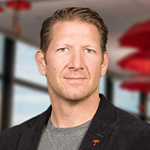
Rich Ives
Senior Vice President, Business Insurance Claim, Travelers
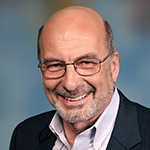
Les Kertay, Ph.D, ABPP
Clinical Psychologist; Chief Medical Officer, Ascellus; Adjunct Professor of Psychology, University of Tennessee at Chattanooga
Host

Joan Woodward
President, Travelers Institute; Executive Vice President, Public Policy, Travelers
Presented by
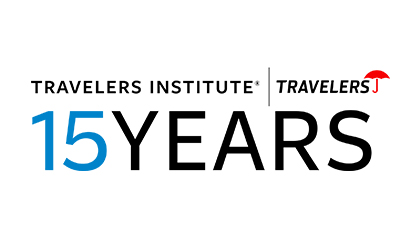
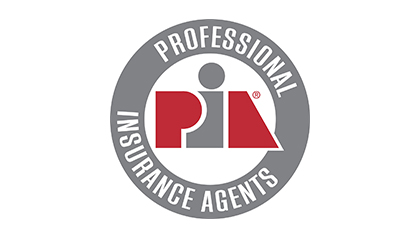
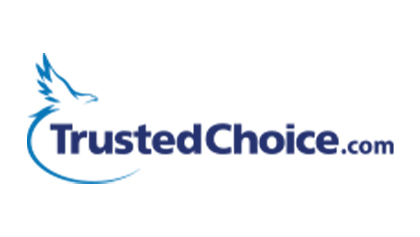
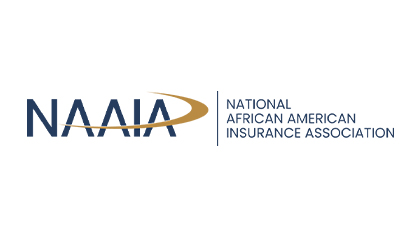
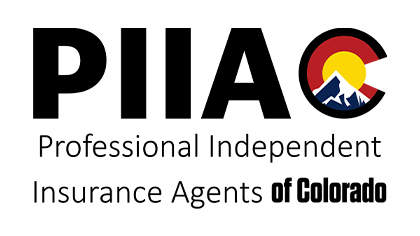
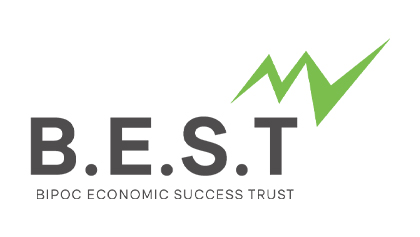
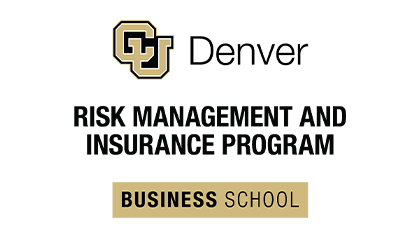
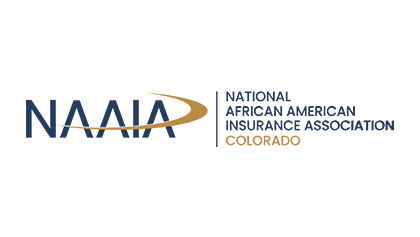
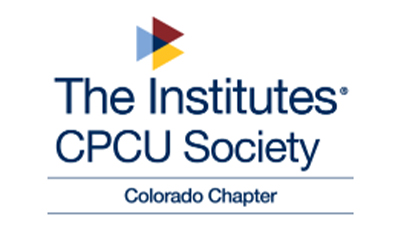
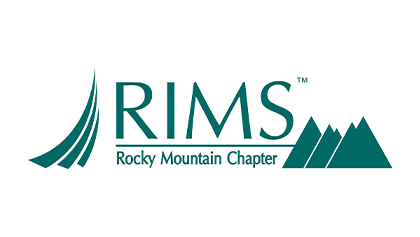
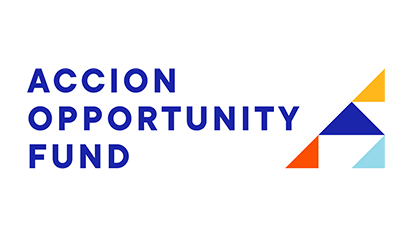
Event highlights in the news
Mental health in the workplace: 5 nuggets of wisdom
September 11, 2024 | BenefitsPRO
How to create a mental health action plan
September 9, 2024 | SHRM